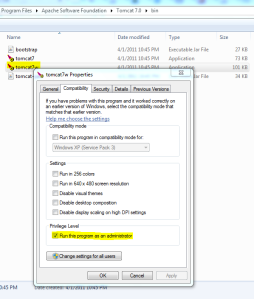1.VideoApp.java
package com.javapages4all.videoapp;
import android.app.Activity;
import android.content.pm.ActivityInfo;
import android.net.Uri;
import android.os.Bundle;
import android.view.WindowManager;
import android.widget.MediaController;
import android.widget.VideoView;
public class VideoApp extends Activity
{
VideoView mVideoView;
MediaController mc;
@Override
protected void onCreate(Bundle savedInstanceState)
{
super.onCreate(savedInstanceState);
setContentView(R.layout.videoapp);
getWindow().setFlags(WindowManager.LayoutParams.FLAG_FULLSCREEN, WindowManager.LayoutParams.FLAG_FULLSCREEN);
setRequestedOrientation(ActivityInfo.SCREEN_ORIENTATION_LANDSCAPE);//if you want.
//File video = new File(“your file path”);
mVideoView = (VideoView) findViewById(R.id.myvideoview);
mc = new MediaController(this);
mVideoView.setMediaController(mc);
mc.setAnchorView(mVideoView);
mVideoView.setMediaController(mc);
//mVideoView.setVideoPath(video.getAbsolutePath());
mVideoView.setVideoURI(Uri.parse(“http://www.pocketjourney.com/downloads/pj/video/famous.3gp”));
mVideoView.requestFocus();
mVideoView.start();
}
}
2.videoapp.xml
<RelativeLayout xmlns:android=”http://schemas.android.com/apk/res/android”
android:layout_width=”fill_parent”
android:layout_height=”fill_parent” >
<VideoView android:id=”@+id/myvideoview”
android:layout_width=”fill_parent”
android:layout_alignParentRight=”true”
android:layout_alignParentLeft=”true”
android:layout_alignParentTop=”true”
android:layout_alignParentBottom=”true”
android:layout_height=”fill_parent”>
</VideoView>
</RelativeLayout>
3.AndroidManifest.xml
<?xml version=”1.0″ encoding=”utf-8″?>
<manifest xmlns:android=”http://schemas.android.com/apk/res/android”
package=”com.javapages4all.videoapp”
android:versionCode=”1″
android:versionName=”1.0″ >
<uses-sdk
android:minSdkVersion=”8″
android:targetSdkVersion=”18″ />
<uses-permission android:name=”android.permission.INTERNET” />
<application
android:allowBackup=”true”
android:icon=”@drawable/ic_launcher”
android:label=”@string/app_name”
android:theme=”@style/AppTheme” >
<activity
android:name=”com.javapages4all.videoapp.VideoApp”
android:label=”@string/app_name” >
<intent-filter>
<action android:name=”android.intent.action.MAIN” />
<category android:name=”android.intent.category.LAUNCHER” />
</intent-filter>
</activity>
</application>
</manifest>






